‘Now You See Us’ parodies invisibility of ageism in modern-day society
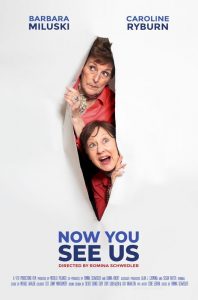 Now You See Us is one of the short films that the Fort Myers Film Festival is screening this year. The film features an all-female cast and crew.
Now You See Us is one of the short films that the Fort Myers Film Festival is screening this year. The film features an all-female cast and crew.
The short opens with a sixty-something actress by the name of Caroline (Caroline Ryburn) repeating her peculiar pre-audition routine for the thousandth time when suddenly the door to the minuscule waiting area opens. In enters not the casting director, but her career-long rival, Barb (Barbara Miluski). The catty hopefuls wait, bicker, rehearse, then bicker some more… Finally they are ushered into an equally dreary and horrendously stuffy casting room. As the temperature rises within its oppressive confines, Caroline attempts to open a window to let some fresh air in. 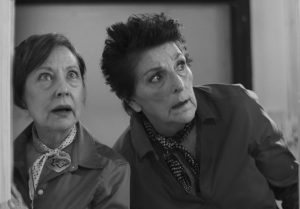 In the best farcical tradition, she trips, falls through a paper backdrop and flies across the room before sprawling on the hardwood floor. Rivalry forgotten, Barb rushes to her rescue, launching the two women on a long-overdue journey of discovery about the way they are seen (or not) by the world around them.
In the best farcical tradition, she trips, falls through a paper backdrop and flies across the room before sprawling on the hardwood floor. Rivalry forgotten, Barb rushes to her rescue, launching the two women on a long-overdue journey of discovery about the way they are seen (or not) by the world around them.
It’s no secret that sexism is alive and well in Hollywood. 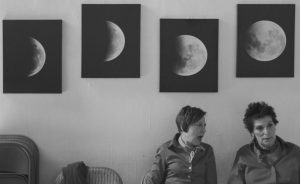 But so is age discrimination. And while sociologists maintain that 65 is the new “middle age,” that doesn’t apply in the film and television industry where 45 is considered over the hill and 30 is past your prime.
But so is age discrimination. And while sociologists maintain that 65 is the new “middle age,” that doesn’t apply in the film and television industry where 45 is considered over the hill and 30 is past your prime.
A report released in 2017 by the Media, Diversity and Social Change 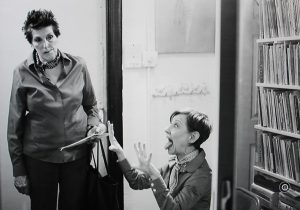 Initiative at the University of Southern California’s Annenberg School for Communication and Journalism found that of the top 100 grossing films of 2016, just 34 had women in leading roles, with women over the age of 45 starring in just eight of those (namely Meryl Streep, Renee Zellweger, Tina Fey, Melissa McCarthy (in two of the films), Ellen DeGeneres, Taraji P. Henson and Nia Vardalos). And only five of 2016’s top 100 films were
Initiative at the University of Southern California’s Annenberg School for Communication and Journalism found that of the top 100 grossing films of 2016, just 34 had women in leading roles, with women over the age of 45 starring in just eight of those (namely Meryl Streep, Renee Zellweger, Tina Fey, Melissa McCarthy (in two of the films), Ellen DeGeneres, Taraji P. Henson and Nia Vardalos). And only five of 2016’s top 100 films were 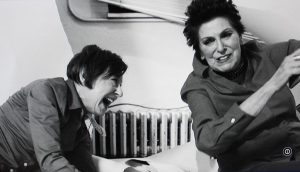 directed by women.
directed by women.
According to 2010 census data, approximately 53% of people 45 years of age and older are women — yet women held only 21% of leading roles for this age bracket in 2016, the USC study found.
Part of the problem is the way in which screenwriters write women’s roles. 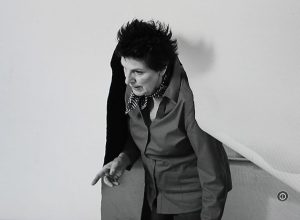 Rarely are women featured as central characters. Instead, they exist either as companions to their male counterparts or, in the case of older female characters, as grandmothers, spinsters and even witches.
Rarely are women featured as central characters. Instead, they exist either as companions to their male counterparts or, in the case of older female characters, as grandmothers, spinsters and even witches.
Geena Davis (Marjorie Prime, Thelma and Louise, A League of Their Own) is one actor who is leading the fight against 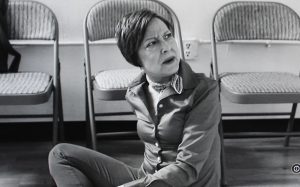 gender inequality and ageism in Hollywood. Through the Geena Davis Institute on Gender in Media, she has been fighting since 2007 for more female representation, including women of a certain age.
gender inequality and ageism in Hollywood. Through the Geena Davis Institute on Gender in Media, she has been fighting since 2007 for more female representation, including women of a certain age.
Since turning 60, Jessica Lange has snagged three Emmys and roles in critically acclaimed shows like American Horror Story 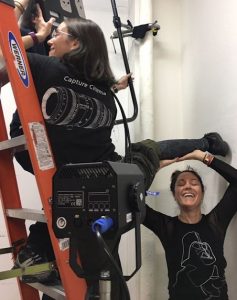 and Feud: Bette and Joan. But that notwithstanding, Lange freely admits that it’s tough to do well as an actress as one gets older. “Ageism is pervasive in this industry,” she told AARP The Magazine. “It’s not a level playing field. You don’t often see women in their 60s playing romantic leads, yet you will see men in their 60s playing romantic leads with costars who are decades younger.”
and Feud: Bette and Joan. But that notwithstanding, Lange freely admits that it’s tough to do well as an actress as one gets older. “Ageism is pervasive in this industry,” she told AARP The Magazine. “It’s not a level playing field. You don’t often see women in their 60s playing romantic leads, yet you will see men in their 60s playing romantic leads with costars who are decades younger.”
Dakota Johnson has witnessed ageism in Hollywood generationally. Johnson’s mother, Melanie Griffith, and grandmother, Tippi Hedren, have virtually disappeared from film and television in spite of their unquestionable talent.
“[Writers] 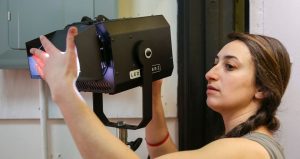 don’t really find women who are getting older to be fascinating enough to make screenplays about,” observes Hedren. “I mean, they just don’t write those anymore.”
don’t really find women who are getting older to be fascinating enough to make screenplays about,” observes Hedren. “I mean, they just don’t write those anymore.”
But Barbara Miluski didn’t write the play on which the film is based to parody gender inequality and ageism in the film industry. 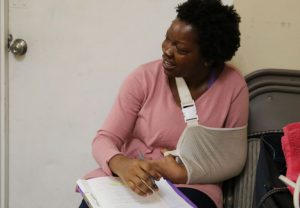 She penned the play, Boom, because she found herself being routinely passed over for commercials that promote the very products being marketed to the demographic she herself occupies. Still, the proverbial last straw happened when a Millennial ploughed into her on a busy street. Even though she was sporting a brightly-colored blouse, he claimed, apologetically,
She penned the play, Boom, because she found herself being routinely passed over for commercials that promote the very products being marketed to the demographic she herself occupies. Still, the proverbial last straw happened when a Millennial ploughed into her on a busy street. Even though she was sporting a brightly-colored blouse, he claimed, apologetically, 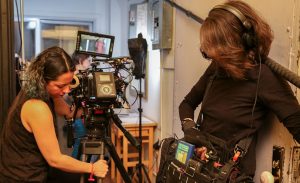 that he simply didn’t see her. And with that, Barbara realized that people of a certain age are invisible in modern-day society.
that he simply didn’t see her. And with that, Barbara realized that people of a certain age are invisible in modern-day society.
When Miluski decided to convert her script into a screenplay, she sought out a woman to adapt the play and direct the film. And as the film’s producer, Miluski also insisted on hiring as many talented women as they could find 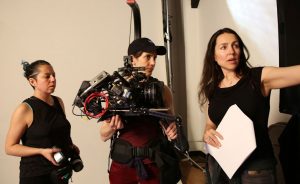 for both their on set and post-production crew. You see, Miluski doesn’t just talk the talk. She’s all about establishing greater female representation in the industry.
for both their on set and post-production crew. You see, Miluski doesn’t just talk the talk. She’s all about establishing greater female representation in the industry.
That director was Romina Schwedler, and she was down Miluski’s hiring objectives for the 11-minute coming-of-a- certain-age comedy. A true creative, Schwedler also made several artistic choices that advance the themes of aging and invisibility that the film so persuasively makes.
certain-age comedy. A true creative, Schwedler also made several artistic choices that advance the themes of aging and invisibility that the film so persuasively makes.
For example, Schwedler shot the entire film in black and white. From movies like A Girl Walks Home Alone to The Artists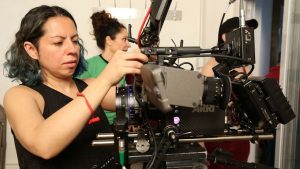 and The Man Who Wasn’t There, the use of black-and-white film serves not just as a temporal marker, but signals that the film is making a narrative or allegorical statement.
and The Man Who Wasn’t There, the use of black-and-white film serves not just as a temporal marker, but signals that the film is making a narrative or allegorical statement.
In addition, Schwedler filmed Now You See Us in dim, low light 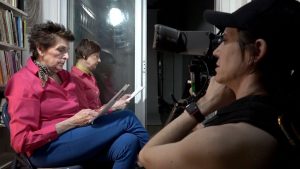 and a claustrophobic set that amp up the tension between Caroline and Barb and underscores that aging and their increasing invisibility in the world in which they live unites them far more profoundly than their rivalry drives them apart.
and a claustrophobic set that amp up the tension between Caroline and Barb and underscores that aging and their increasing invisibility in the world in which they live unites them far more profoundly than their rivalry drives them apart.
Now You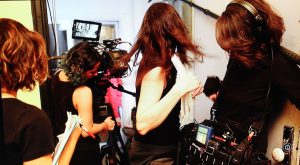 See Us stands on its own merits as uproariously funny and hugely entertaining comedy. The writing is spritely and, at times, painfully droll, and Miluski and Ryburn deliver their lines with seasoned timing and the wry wisdom that befits the wizened characters they play.
See Us stands on its own merits as uproariously funny and hugely entertaining comedy. The writing is spritely and, at times, painfully droll, and Miluski and Ryburn deliver their lines with seasoned timing and the wry wisdom that befits the wizened characters they play.
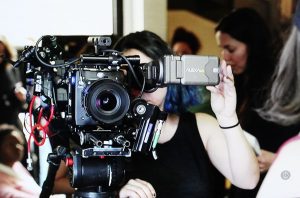 It’s not surprising, and actually befitting, that Now You See Us has enjoyed both critical acclaim and popular success. The film won the Won the Special Jury Award at its world premiere at the 8th Annual Chelsea Film Festival and was juried into the Oscar® Qualifying St. Louis International Film Festival and Cinequest Film Festival, among others.
It’s not surprising, and actually befitting, that Now You See Us has enjoyed both critical acclaim and popular success. The film won the Won the Special Jury Award at its world premiere at the 8th Annual Chelsea Film Festival and was juried into the Oscar® Qualifying St. Louis International Film Festival and Cinequest Film Festival, among others.
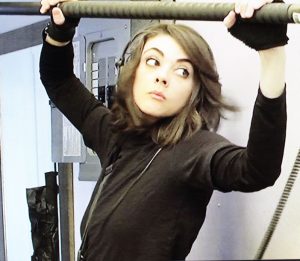 Now You See Us screens in the Sidney & Berne Davis Art Center during Comedy Block 1 beginning at 2:00 p.m. on Saturday, May 15.
Now You See Us screens in the Sidney & Berne Davis Art Center during Comedy Block 1 beginning at 2:00 p.m. on Saturday, May 15.
April 20, 2021.














 Tom Hall is both an amateur artist and aspiring novelist who writes art quest thrillers. He is in the final stages of completing his debut novel titled "Art Detective," a story that fictionalizes the discovery of the fabled billion-dollar Impressionist collection of Parisian art dealer Josse Bernheim-Jeune, thought by many to have perished during World War II when the collection's hiding place, Castle de Rastignac in southern France, was destroyed by the Wehrmacht in reprisal for attacks made by members of the Resistance operating in the area. A former tax attorney, Tom holds a bachelor's degree as well as both a juris doctorate and masters of laws in taxation from the University of Florida. Tom lives in Estero, Florida with his fiancee, Connie, and their four cats.
Tom Hall is both an amateur artist and aspiring novelist who writes art quest thrillers. He is in the final stages of completing his debut novel titled "Art Detective," a story that fictionalizes the discovery of the fabled billion-dollar Impressionist collection of Parisian art dealer Josse Bernheim-Jeune, thought by many to have perished during World War II when the collection's hiding place, Castle de Rastignac in southern France, was destroyed by the Wehrmacht in reprisal for attacks made by members of the Resistance operating in the area. A former tax attorney, Tom holds a bachelor's degree as well as both a juris doctorate and masters of laws in taxation from the University of Florida. Tom lives in Estero, Florida with his fiancee, Connie, and their four cats.